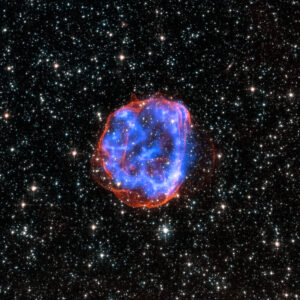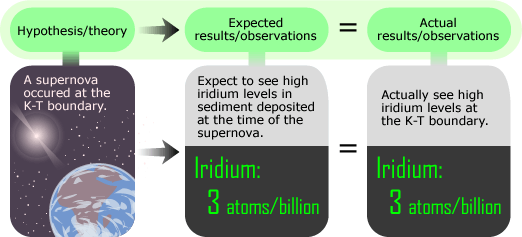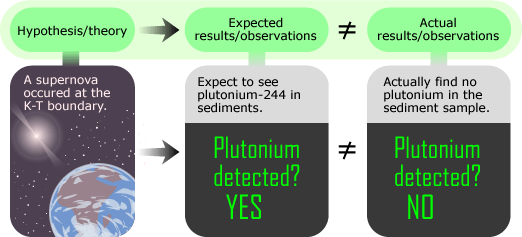Alvarez had embarked on the iridium analysis to resolve the issue of the speed of the KT clay deposition, but the results sidetracked him once again, pointing to a new and even more compelling question: what caused the sky-high iridium levels at the KT boundary? The observation of high global iridium levels happened to support an existing hypothesis.

Almost ten years before the iridium discovery, physicist Wallace Tucker and paleontologist Dale Russell had proposed that a supernova (and the accompanying radiation) at the end of the Cretaceous had caused the extinction of dinosaurs. Supernovas throw off heavy elements like iridium — so the hypothesis seemed to fit perfectly with the team’s discovery. In this case, an observation made in one context (the timing of the KT transition) ended up supporting a hypothesis that had not initially been on the researchers’ radar screen at all (that the dinosaur extinction was triggered by a supernova).

To further test the supernova hypothesis, the team reasoned out what other lines of evidence might be relevant. Luis Alvarez realized that if a supernova had actually occurred, it would have also released plutonium-244, which would have accumulated alongside the iridium at the KT boundary.
Excited about the possibility of the supernova discovery (strong evidence that the dinosaurs had been killed off by an imploding star would have made worldwide headlines), the team decided to perform the difficult plutonium tests. When Helen Michel and Frank Asaro came back with the test results, they were elated to have discovered the telltale plutonium! But double-checking their results by replicating the analysis led to disappointment: their first sample had been contaminated by an experiment going on in a nearby lab — there was no plutonium in the sample at all, contradicting the supernova hypothesis.

Throughout this story, scientists test hypotheses about events that happened long ago. Explore further:
- Find out what makes an idea testable.
- Find out more about how scientists test ideas about the past.
